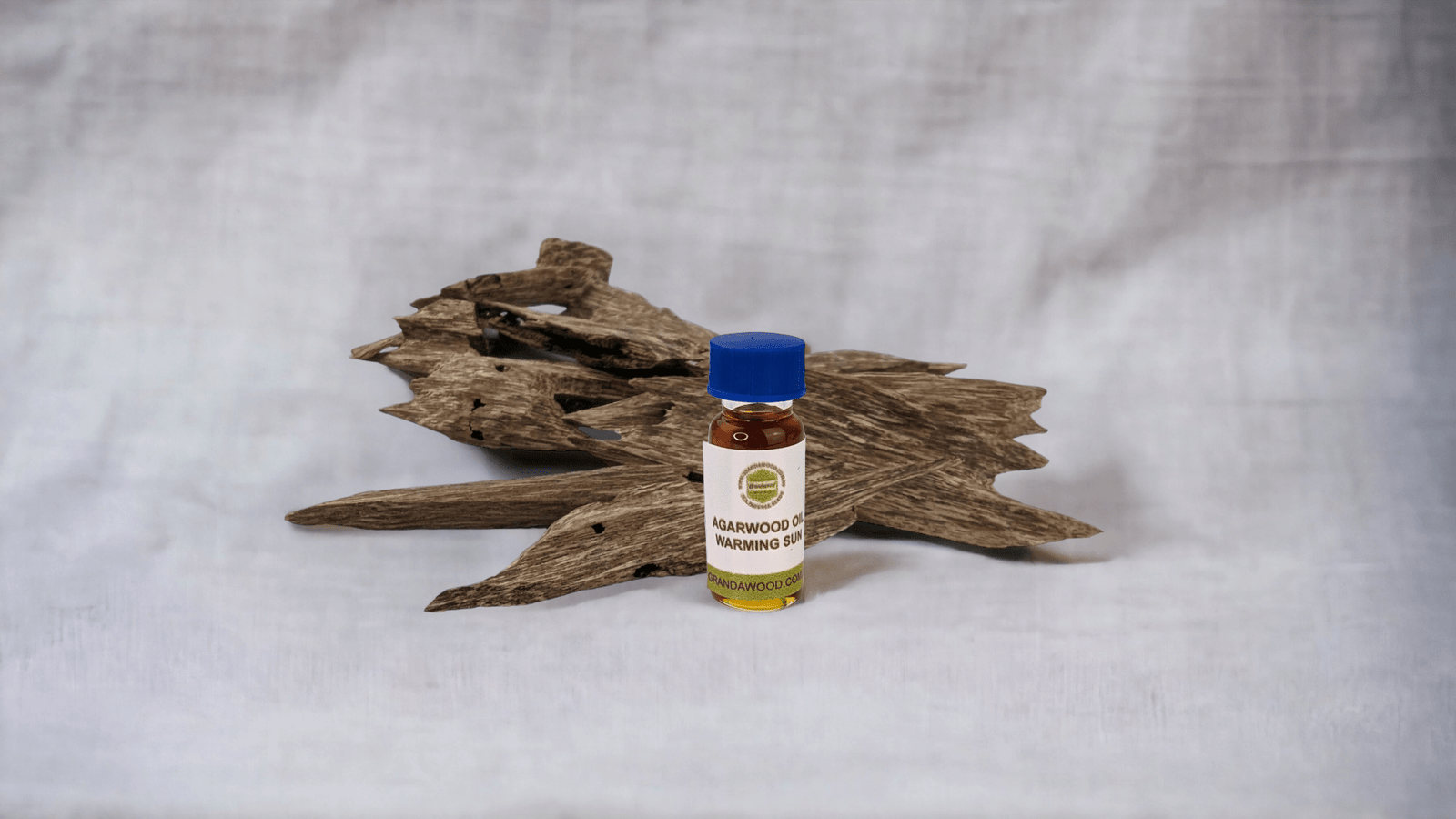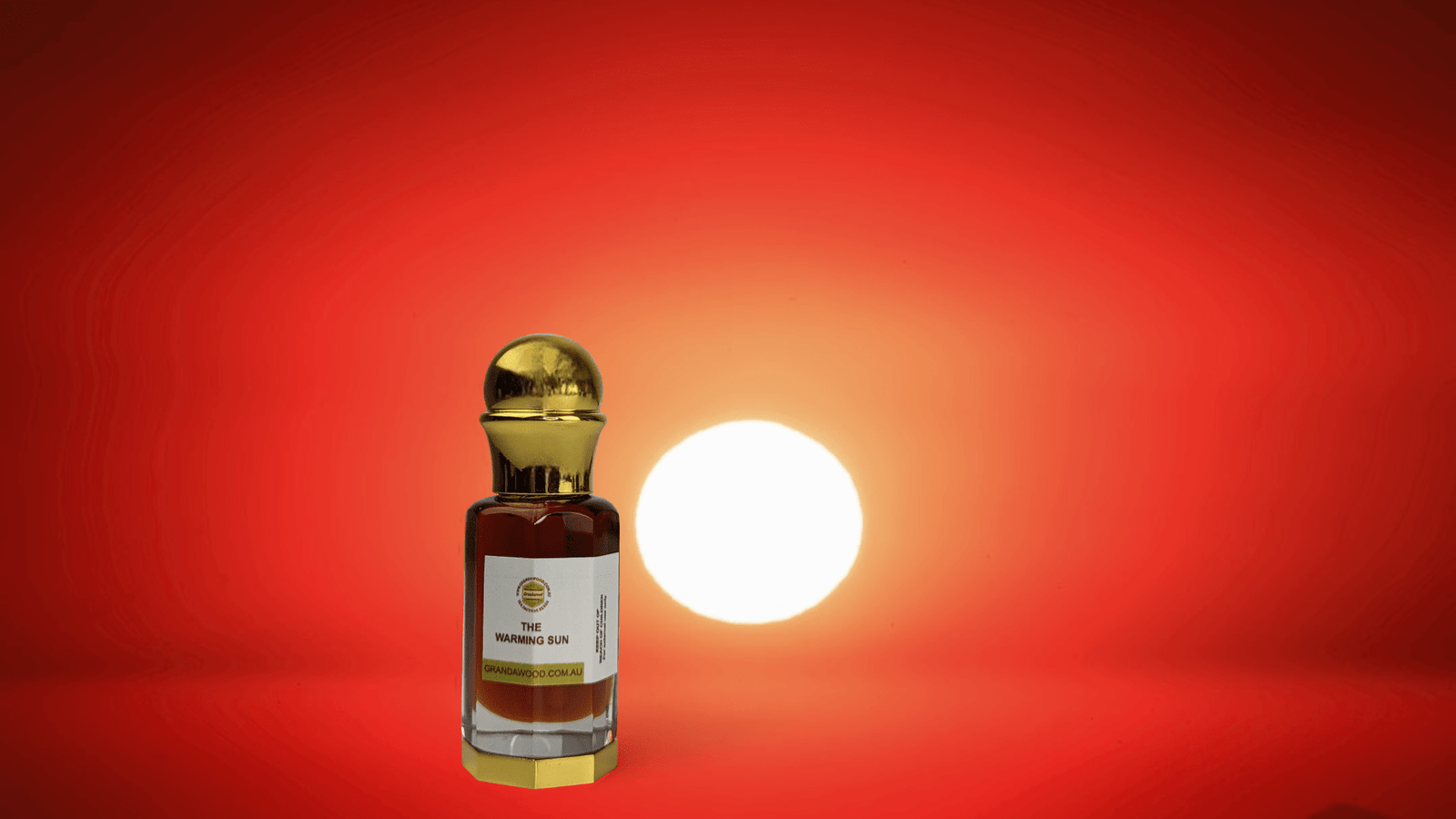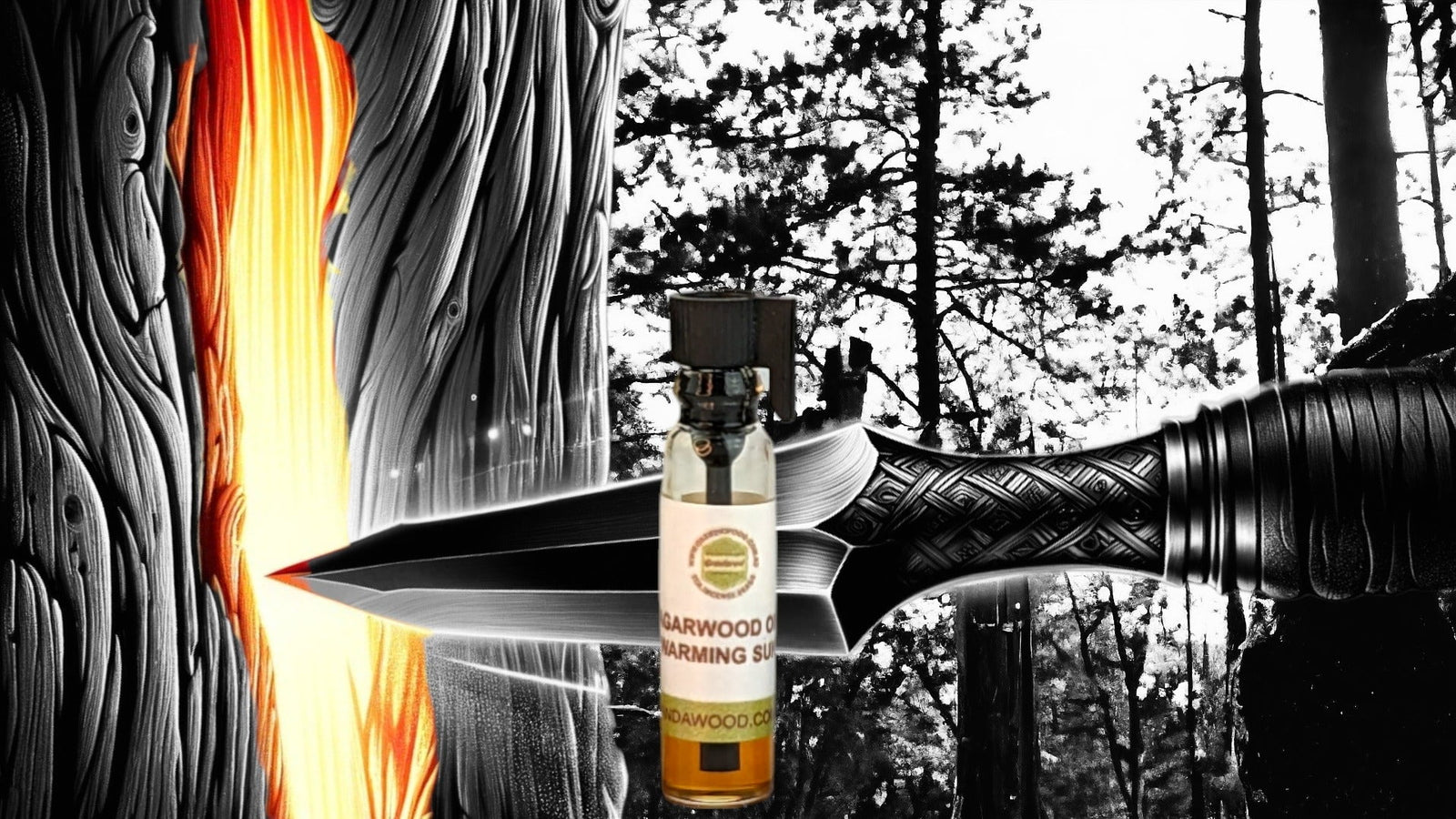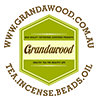



The Warming Sun - Hydro-distilled Pure Cultivated Oud Oil
For a quick guide to our Oud oil, click HERE
12 years to make this oil.
Let me break it down for you.
It takes 10 years to grow a tree, 2 years to create Agarwood, and 168 hours to "cook" this Warming Sun Agarwood Oil.
And that's just the beginning.
Because...
You would NOT be able to smell this "brain-stimulating" oud in a department store and the major niche-perfume houses, but here, at Grandawood.
Here is why:
Many people said they loved Oud (Agarwood oil), but the truth is they don't know what genuine Oud smells like.
The reason is simple: they have never smelled it alone. They wish they could isolate the "oud" scent in niche perfume.
They heard of this so-called "Wood Of God" before and tried to get their hands on it. They wanted to know what was so special about Oud to have that name.
So they went to many perfumer stores and supermarkets. If they found the word Oud on the label, they would try. But in the end, they were still not able to try it.
It is challenging to get their hands on authentic agarwood oil for the following reasons:
- Oud (Agarwood) is mainly available in Southeast Asia and controlled. Getting them on the shelves could take months from getting the proper approval to the logistics side.
- Showing these ouds to the public requires some knowledge from the retail staff to consult the products to the consumer.
- Being a natural product (essential oil), its scent profile changes depending on the batch. Big stores prefer quality consistency to minimise the return rate. They expect if a product smelt great in the first batch, it should smell identical to the second batch. Unfortunately, its scent profile will vary slightly with oud oil on each batch.
- Stock control is a concern. Retail thefts are on the rise. What would happen if a shoplifter left the store with 1 litre of Oud without paying? At least a 5-figure worth of stock would be missing. How do you feel if you are the store manager?
With the time and a particular method of distilling this woody aroma, there is not enough to distribute it on a large scale.
Let me explain; Agarwood is formed around wounded holes in Aquilaria trees.
There are multiple ways to wound the Aquilaria trees to secrete its defence mechanism: Agarwood.
There are bad ways and good ways.
One of the bad ways is to use toxic pesticides in the tree. Agarwood that is produced this way will have a trace of pesticides.
The other way is to use pure brute force without toxic chemicals involved.
Today, I will show you an extraordinary way that we use, a secret of creating brain-stimulating good Oud.
And you have NOT seen this closely guarded technique before? This technique makes Agarwood oil have a warm, welcome woody smell.
It is the long-lost traditional technique- Red Hot Iron Spear.
You have seen drills and fungi-inducing methods to create Agarwood. But I believe you have not seen this before, even if you are an experienced oud appreciator.
First, a skilled worker ("striker") heats some iron spears to 400 degrees Celcius. He then hammers these spears THROUGH each tree one by one.


Many growers have given this up because it takes so much time and effort. But why are we still doing it?
Because it makes the aroma of this oil like no other on the market.
What unique features does it add to the Oud scent profile?
Ladies and gentlemen, let me introduce you to this aromatic cultivated oud oil: The Warming Sun.
The material used to distil this Oud is from the wounded Aquilaria Malaccensis trees. Workers penetrate "red hot iron rods" into the tree to create this special Agarwood. Once the temperature decreases, he pulls the rod out and lets the tree rest: natural agarwood creation.
It sounds easy, but a tiny mistake could cost the farmers a decade to fix. No wonder they choose a different method to create Agarwood.
The "strikers" need to know where the safe spot to hit is; the trees may die if the spear hits its weak spot. Imagine growing the tree for twelve years and killing it in a strike. One tree might be ok. What is going to happen if ten trees die? What if a hundred trees die? Devastating, of course.
Not only that, this method, "The Red Hot Iron Technique", does not involve fungi or any inoculating way directly. It takes longer to have Agarwood and less yielding than any contemporary method. After three years, local farmers saw the tree down and scraped out the white Oud.
This is where our modern, precise method changes everything.
Right after the hot iron is removed, we infuse the wound with a specific, extremely dilute brine solution (only 0.023376 g of salt per litre). This measured salt solution acts as an essential secondary catalyst. Scientific research confirms this combined process significantly increases the volume of essential oil produced by a margin that is two to three times higher than the old, fire-drill-only method.

Image by Truong Dinh Anh
Because of this careful, two-step process, we can ensure the highest yield while maintaining the unique aromatic profile of this laborious technique, though we still only produce a minimal amount (only 900 g a month).
The Reward
The primary purpose of this particular method is to create a distinctive smell using the forgotten way. The Hot Iron Spear method will add a "fire" element to the wood chip. If oud distiller used these chips to distil, what would happen?



Grind these Oud into powder
The result: brain-stimulating aroma
As soon as you open the bottle, the volatile compound will vapour. Within an arm range, you can smell the Oud instantly.
Take a small dab from a bottle on your wrist or a cotton pad.
The magic happens the moment you take a sniff and inhale deeply from either your wrist on a cotton pad. A sensational pleasant feeling washes through your nose. The accord includes warm woody, a hint of spice and herbaceous, subtle floral. After several hours, it dries down to balsamic vanillic ouddy.
You may hear people talk about Agarwood or Oud all the time. Isn't it time to try it now?
Warning: it is super addictive.
How to apply

Apply a small dab to test any adverse reaction on your skin. External use on the skin only. Do not ingest.
You can dab on your shirt, your wrist, behind your ears or your neck. At this price, you can wear it daily. All you need is a dab.
Only available here at Grandawood
You won't find it in any department stores or any essential oil suppliers because:
- We did not distribute to any of them. For this particular Warming Sun Oud, It is simply NOT enough Oud to do so.
If you are still reading, I guess you like what you see so far, and I know you want to try it out.
It is easy, add to cart and checkout. You will be glad that you do.
Last but not least, I want you to know Oud oil is generally safe to use on the skin neatly. Apply a small dab on your wrist or the back of your elbow to see any adverse reaction.
"Where should I go from here?"
If you like what you read so far, wait until you experience it with your nose.
Scroll back up to see a valuable offer with other amazing oud oils
SAFETY
According to the Essential Oil Safety book, Agarwood oil is not known to have any issues when applied neatly or topically on the skin. However, to be extra safe, please kindly apply a small dab to your elbow or wrist to see if you have any sensitivity with Oud Oil.
Just in case you do, stop applying directly on your skin. You can dilute it with jojoba or fractionated coconut oil.
Do NOT drink,
Do NOT ingest
According to Tisserand, R., & Young, R. (2014). Essential Oil Safety: A Guide for Health Care Professionals. Elsevier. (p. 190).
Agarwood, often referred to by several synonyms, including Agar, Aloes Wood, Eaglewood, Lignum Aloe, and Ood, is a special type of wood known for its unique fragrance. Its botanical name is Aquilaria malaccensis Lamk, and it belongs to the Thymelaeaceae family. Other botanical names you might come across for this species include Aquilaria agallocha Roxb., Agallochum malaccense (Lamk) Kuntze, and Aquilariella malaccensis (Lamk) v. Tieghem.
The essential oil derived from Agarwood is of particular interest due to its distinctive aroma, which comes from the tree's resin. The key constituents that make up this oil vary but generally contain the following, as found in Agarwood:
- 2-(2-(4-Methoxyphenyl)ethyl) chromone: 21.2–33.0%
- 2-(2-Phenylethyl) chromone: 16.1–23.6%
- Oxo-agarospirol: 1.4–5.3%
- Guaia-1(10),11-dien-15-oic acid: less than 4.7%
- 6-Methoxy-2-(2-(4-methoxyphenyl)ethyl) chromone: 2.0–3.7%
- Guaia-1(10),11-dien-15-al: 0.4–3.4%
- Selina-3,11-dien-9-ol: 0.4–2.8%
- Selina-3,11-dien-9-one: 0.2–2.1%
As for safety, no known hazards or contraindications are associated with Agarwood. In studies, Agarwood oil vapours have been shown to have a sedative effect on mice. However, there is no data available regarding acute toxicity, carcinogenic or anticarcinogenic potential. Despite this, it's noteworthy that Agarwood oil contains no known carcinogens.
One notable factor about Agarwood essential oil is its cost. It is one of the most expensive aromatic raw materials, commanding a price that is 10–15 times higher than jasmine absolute. This is primarily because the. oil is extracted only from wood infected by a specific type of fungus.
Different geographic locations can yield oils with different constituent profiles. For instance, analyses have found variations in oils from India and Bangladesh compared to Vietnamese Agarwood oil. Agarwood oil may also be derived from another species, Aquilaria sinensis (Lour.) Gilg.
Aquilaria species is listed in Appendix II of the Convention on International Trade in Endangered Species (CITES), which includes species that are not currently threatened with extinction but might become so without closely controlled trade. This precious wood is also processed into CO2 extracts. Despite the complexities and cost, Agarwood remains highly sought after for its unique, enchanting scent.





